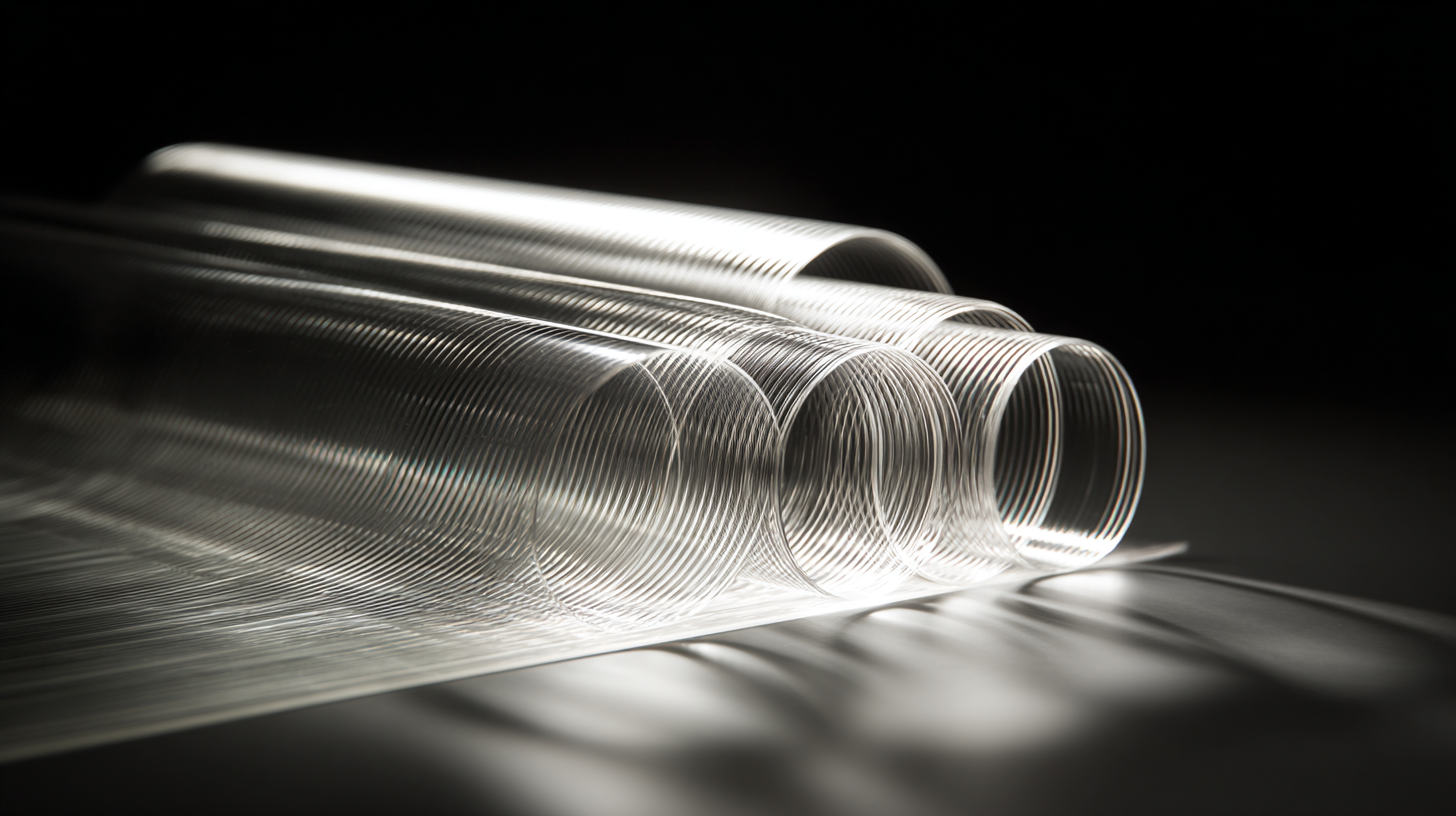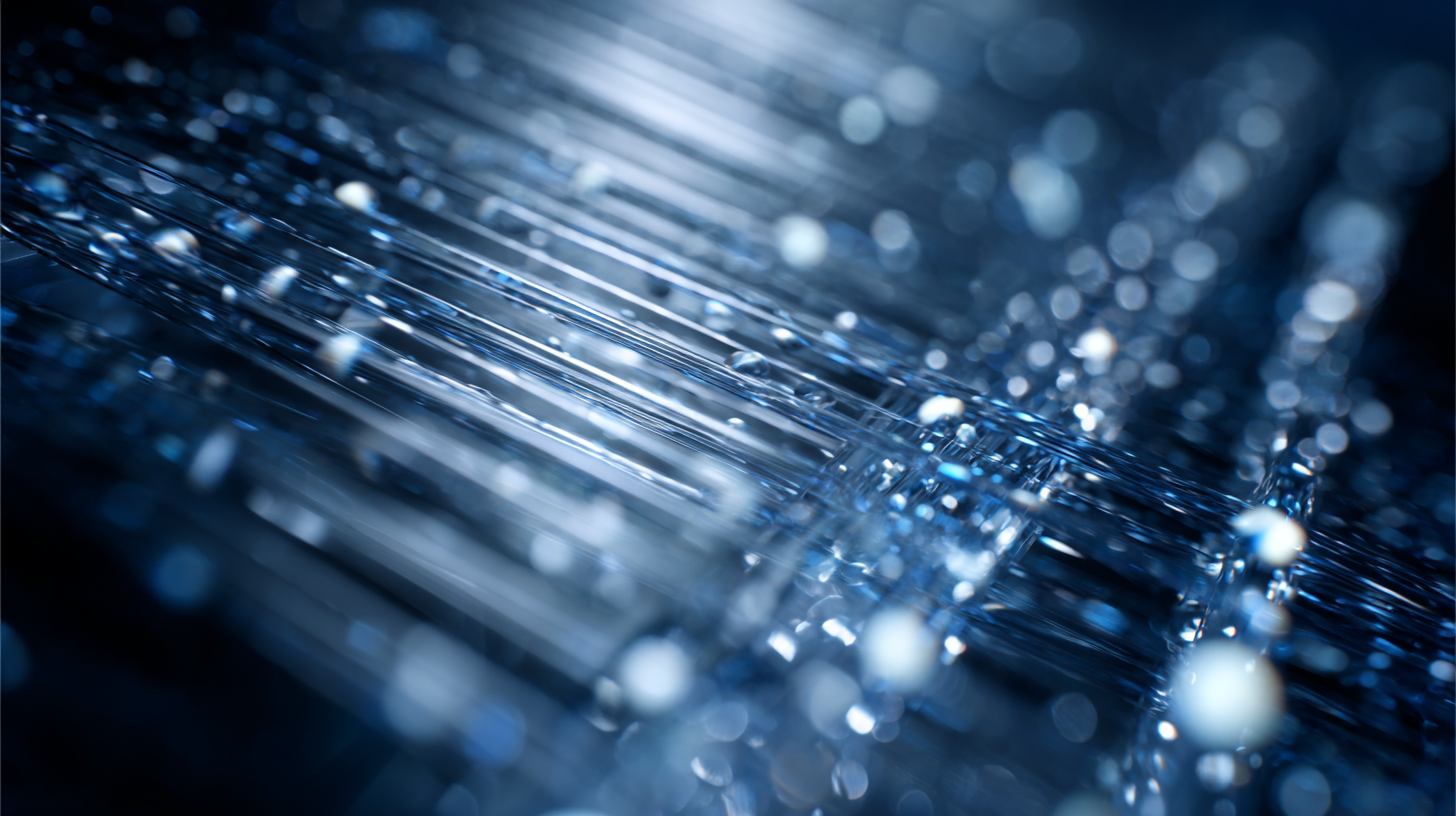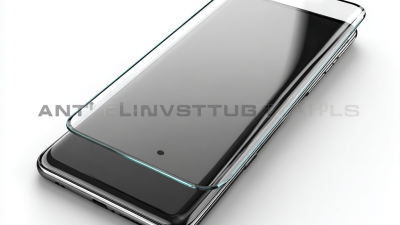
The glass industry has witnessed remarkable advancements, particularly in the realm of Glass Deep Processing, where traditional materials are being transformed into innovative products with diverse applications. According to a report by MarketsandMarkets, the global glass processing market is projected to reach USD 315.1 billion by 2025, growing at a CAGR of 4.2%. This surge is driven by the rising demand for high-performance glass in sectors such as architecture, automotive, and electronics. Innovations in technology and processes, such as laminating, tempering, and coating, enable manufacturers to enhance the durability, aesthetics, and energy efficiency of glass products. Furthermore, the integration of digital solutions in manufacturing processes not only optimizes production but also introduces customizable options for consumers. As the industry continues to evolve, the focus on sustainability and the development of smart glass will further redefine the boundaries of what glass can achieve, marking a transformative era in Glass Deep Processing.

The evolution of glass deep processing techniques has significantly transformed the way we utilize this versatile material. From traditional methods such as glassblowing and casting to modern innovations like laser engraving and CNC machining, the industry has seen remarkable advancements. These cutting-edge techniques not only enhance the aesthetic appeal of glass products but also improve their functionality and durability. The rise of nanotechnology, for instance, has led to the development of self-cleaning and anti-reflective coatings, expanding the applications of glass in various fields, including architecture and electronics.
Moreover, the impact of these innovations extends beyond individual products to influence entire industries. For example, the automotive sector has benefited from tempered and laminated glass that offers better safety features while reducing weight for improved fuel efficiency. In the realm of consumer goods, the introduction of lightweight, shatter-resistant glass has revolutionized packaging, leading to safer and more eco-friendly options. As glass deep processing continues to evolve, it remains a driving force behind both artistic creativity and technological advancement, shaping a future where everyday glass can achieve extraordinary functionality and design.

The innovative applications of glass in architecture and design are revolutionizing the way spaces are built and experienced. Modern architecture utilizes advanced glass technologies to create stunning facades that not only enhance aesthetic appeal but also improve energy efficiency. Transparent materials, such as low-emissivity (Low-E) glass, help regulate indoor temperatures while minimizing UV exposure, making buildings more sustainable and comfortable. Architectural projects increasingly incorporate large glass panels, allowing for an abundance of natural light and seamless connections to the outdoors, which enhance the overall experience of the built environment.
Additionally, glass deep processing opens the door for unique design possibilities, allowing architects and designers to push the boundaries of creativity. From textured and colored glass to innovative shapes and sizes, the versatility of glass enables the creation of striking interior and exterior elements. Glass can be molded, layered, and treated to create partitions, decorative features, and even furniture that inspire modern living spaces. As technology advances, the integration of smart glass, which can change transparency and tint based on light conditions, represents yet another frontier in architectural design, suggesting a future where glass is not just a building material but a transformative element in shaping our environments.
This chart illustrates the innovative applications of glass in various architectural and design elements, showcasing its versatility and impact on modern design.
The glass industry has seen significant advancements in processing techniques that prioritize sustainability, effectively reducing waste and enhancing the durability of products. Modern innovations in recycling processes allow manufacturers to reclaim and utilize post-consumer glass, minimizing the need for raw materials and cutting down carbon emissions associated with glass production. These efforts not only contribute to a circular economy but also help in conserving energy, as recycled glass melts at a lower temperature compared to raw materials.
Moreover, advancements in coating technologies and tempering processes are improving the longevity of glass products. By applying durable coatings, glass can withstand harsh environmental conditions, thereby extending its lifecycle. This not only reduces the frequency of replacements but also culminates in lesser landfill contributions. As consumers and industries move towards more responsible practices, embracing these innovations in glass deep processing not only makes economic sense but also aligns with global sustainability goals.
Smart glass technologies are revolutionizing the way we interact with our environments, merging functionality with energy efficiency. By adjusting their transparency and shading in response to external light conditions, these innovative glass solutions can significantly reduce heating and cooling costs in buildings. This dynamic adaptability not only enhances comfort for occupants but also contributes to substantial energy savings and environmental sustainability. The integration of smart glass in architectural designs is becoming increasingly popular, leading to more eco-friendly constructions that prioritize both aesthetic appeal and energy performance.

Moreover, the applications of smart glass extend beyond mere energy efficiency. Technologies such as electrochromic, photochromic, and thermochromic glass showcase the potential for controlling light and privacy in real-time. For instance, electrochromic glass can change its tint with a simple electrical signal, allowing for seamless transitions between transparency and opacity. This capability is particularly valuable in urban settings where buildings must balance natural light access while ensuring privacy. As smart glass continues to evolve, we can expect further advancements that will enhance its functionality, making it an essential component of the future's energy-efficient and user-friendly architectural solutions.
The transformation of traditional glass products into advanced materials is reshaping industries and enhancing sustainability. Recent advancements reveal that recycled glass can significantly improve soil properties and enhance concrete performance, positioning itself as a promising alternative in construction. According to industry reports, using recycled materials in construction can lead to a reduction in landfill waste and lower production costs, indicating a positive shift towards a circular economy in the glass sector.
Innovative materials engineering has paved the way for creating purpose-driven composites. The burgeoning field of engineered transparent wood, for example, offers a novel alternative for glass applications by utilizing a cellulose matrix, making it lighter and potentially more sustainable. Furthermore, researchers have developed advanced materials that outperform traditional glass and metals, emphasizing the ongoing evolution in materials science. These innovations not only highlight the capabilities of advanced materials but also offer substantial benefits in terms of environmental impact and resource efficiency, crucial for the manufacturing industry’s growth trajectory heading into 2025 and beyond.
| Innovation Type | Description | Material Used | Applications |
|---|---|---|---|
| Self-Cleaning Glass | Glass coated with a special layer that uses sunlight to break down dirt. | Titanium Dioxide (TiO2) | Windows, solar panels, signage. |
| Laminated Glass | Glass made by sandwiching a layer of polyvinyl butyral (PVB) between two sheets of glass. | Polyvinyl Butyral (PVB) | Automotive windshields, building facades, safety glass. |
| Smart Glass | Glass that changes its properties in response to environmental conditions. | Electrochromic materials | Windows, skylights, privacy partitions. |
| Thermal Insulating Glass | Glass with a low U-value to reduce heat loss. | Argon or Krypton gases | Residential and commercial buildings. |
| Glass Fiber Composites | Combines glass fibers with resin to create lightweight, strong materials. | Glass fibers and epoxy resin | Aerospace, automotive parts, sporting goods. |





